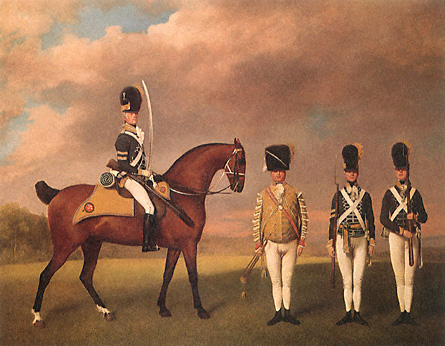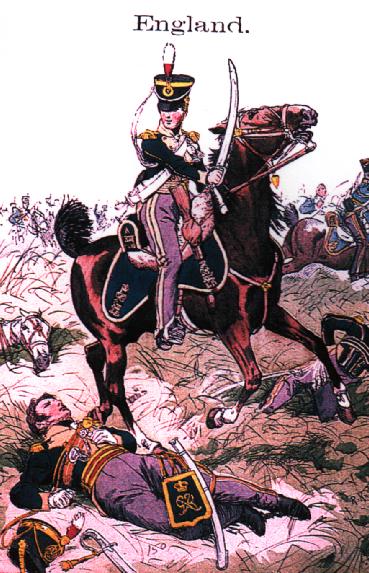
British Light Dragoons

British 13th Light Dragoons advancing at Waterloo.
Dragoons were originally formed to fulfil the reconnaisance and skirmishing role. When it was found that they could no longer perform these functions effectively, the formation of light dragoon troops attached to the heavy cavalry regiments were authorised in the mid-18th century. These proved so effective that full regiments of light dragoons were authorised.
However, by the time of the Napoleonic wars, it was found that the light dragoons had forgotten their original function and had become enamoured with the charge - ie the function of the heavy cavalry. They had to relearn their original role the hard way in the Peninsula where the Hannoverian troopers of the King's German Legion were considered to be the best in British service. It is interesting to note that the light dragoons could also fight dismounted - the 22nd Light Dragoons fought dismounted during the Java campaign of 1811.
Having learnt from their experiences in the Peninsular War, the light dragoons at Waterloo were considerably more controlled than their relatively inexperienced heavy cavalry cousins.
Uniforms
Pre-1812
Headgear - Tarleton with white over red plume and turban of facing colour. After some time in the Peninsula, the turban was changed to black for all regiments.
Jacket - was dark blue with either silver or gold braid on the front (white or yellow for other ranks). Facing colours on collar and cuffs. Cuffs were pointed and edged with lace.
Legwear - either tight white breeches or grey overalls.

British Light Dragoons in pre-1812 uniform.
1812-1815
The light dragoon uniform was changed in 1812 to the following pattern:
Headgear - Bell topped shako with white over red plume.
Jacket - dark blue with plastron front and epaulettes. Facing colours were displayed on the collar, cuffs and plastron lapels.
Legwear - white breeches with Hussar boots in full dress and grey overalls with either 2 red stripes or 2 facing colour stripes.

British Light Dragoon trooper (mounted) and officer in 1812 uniform by Knötel. Illustration reproduced with kind permission of Uniformology.
Facing Colours
8th Regt - red facings, yellow lace (officers' lace - gold)
9th Regt - crimson facings, yellow lace
*11th Regt - pale buff facings, white lace (officers' lace - silver)
*12th Regt - yellow facings, white lace
*13th Regt - buff facings, yellow lace
14th Regt - orange facings, white lace
*16th Regt - scarlet facings, white lace
17th Regt - white facings, white lace
19th Regt - yellow facings, yellow lace
20th Regt - orange facings, yellow lace
21st Regt - pink facings, yellow lace
22nd Regt - pink facings, white lace
*23rd Regt - crimson facings, white lace
24th Regt - light grey facings, yellow lace
25th Regt - light grey facings, white lace
*1st KGL LD - crimson facings, yellow lace
*2nd KGL LD - crimson facings, white lace
(Note: Those regiments marked with an asterisk were present at Waterloo.)
Sources:
- Liliane and Fred Funcken - Historische Uniformen
- Bryan Fosten - Wellington's Light Cavalry - Osprey Men-at-Arms
- Philip Haythornthwaite - Uniforms of the Peninsular Wars
- Philip Haythornthwaite - Wellington's Military Machine
- Ugo Pericoli - 1815 The Armies at Waterloo
- Ian Fletcher - Wellington's Regiments
- Maj William Thorn - The Conquest of Java, 1811
[an error occurred while processing this directive]